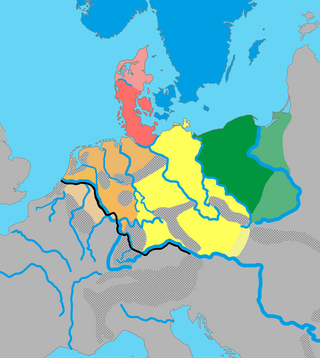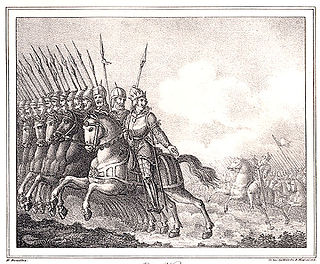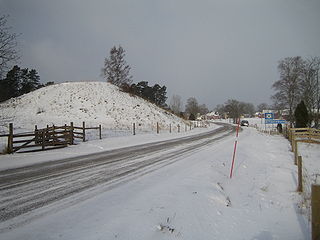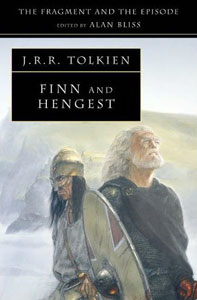
Hrólfr Kraki, Hroðulf, Rolfo, Roluo, Rolf Krage was a semi-legendary Danish king who appears in both Anglo-Saxon and Scandinavian tradition.

The Ynglings were a dynasty of kings, first in Sweden and later in Norway, primarily attested through the poem Ynglingatal. The dynasty also appears as Scylfings in Beowulf. When Beowulf and Ynglingatal were composed sometime in the eighth to tenth centuries, the respective scop and skald (poet) expected his audience to have a great deal of background information about these kings, which is shown in the allusiveness of the references.

The Ingaevones[ɪŋɡae̯ˈwoːneːs] were a West Germanic cultural group living in the Northern Germania along the North Sea coast in the areas of Jutland, Holstein, and Frisia in classical antiquity. Tribes in this area included the Angles, Frisii, Chauci, Saxons, and Jutes.

Ongentheow was the name of a semi-legendary Swedish king of the house of Scylfings, who appears in Old English sources.

Eadgils, Adils, Aðils, Adillus, Aðísl at Uppsölum, Athisl, Athislus or Adhel was a semi-legendary king of Sweden, who is estimated to have lived during the 6th century.

Yrsa, Yrse, Yrs or Urse was a tragic heroine of early Scandinavian legend.

Ohthere, Old Norse Óttarr vendilkráka was a semi-legendary king of Sweden of the house of Scylfings, who is said to have lived during the Germanic Heroic Age, possibly during the early 6th century.
Onela was according to Beowulf a Swedish king, the son of Ongentheow and the brother of Ohthere. He usurped the Swedish throne, but was killed by his nephew Eadgils, who won by hiring foreign assistance.

Finn and Hengest is a study by J. R. R. Tolkien, edited by Alan Bliss and published posthumously in book form in 1982.
Various gods and men appear as sons of Odin or sons of Wodan/Wotan/Woden in old Old Norse and Old High German and Old English texts.

Halfdan was a late 5th and early 6th century legendary Danish king of the Scylding (Skjöldung) lineage, the son of king named Fróði in many accounts, noted mainly as the father to the two kings who succeeded him in the rule of Denmark, kings named Hroðgar and Halga in the Old English poem Beowulf and named Hróar and Helgi in Old Norse accounts.

Weohstan, Wēohstān or Wīhstān is a legendary character who appears in the Anglo-Saxon epic poem Beowulf and scholars have pointed out that he also appears to be present in the Norse Kálfsvísa.

Beowulf is a legendary Geatish hero in the eponymous epic poem, one of the oldest surviving pieces of English literature.

In Swedish prehistory, the Vendel Period appears between the Migration Period and the Viking Age. The name is taken from the rich boat inhumation cemetery at Vendel parish church, Uppland. This is a period with very little precious metal and few runic inscriptions, crammed between periods with abundant precious metal and inscriptions. Instead, the Vendel Period is extremely rich in animal art on copper-alloy objects. It is also known for guldgubbar, tiny embossed gold foil images, and elaborate helmets with embossed decoration similar to the one found at Sutton Hoo in England.
The Battle on the Ice of Lake Vänern was a 6th-century battle recorded in the Norse sagas and referred to in the Old English epic Beowulf. It has been dated to c. AD 530.

The Battle of Finnsburg was a conflict in the Germanic heroic age between Frisians with a possible Jutish contingent, and a primarily Danish party. Described only in later Anglo-Saxon poetry, if the conflict had an historical basis it most likely occurred around 450 AD.
The "Finnesburg Fragment" is a portion of an Old English heroic poem about a fight in which Hnæf and his 60 retainers are besieged at "Finn's fort" and attempt to hold off their attackers. The surviving text is tantalisingly brief and allusive, but comparison with other references in Old English poetry, notably Beowulf, suggests that it deals with a conflict between Danes and Frisians in Migration-Age Frisia.
A number of royal genealogies of the Anglo-Saxon kingdoms, collectively referred to as the Anglo-Saxon royal genealogies, have been preserved in a manuscript tradition based in the 8th to 10th centuries.

Germanic boar helmets are attested in archaeological finds from England and Sweden, dating to Vendel and Anglo-Saxon periods, and Old English and Old Norse written sources. They consist of helmets decorated with either a boar crest or other boar imagery that was believed to offer protection in battle to the wearer. They have also been proposed to be a costume for the ritual transformation into a boar, similar to berserkers, and to be associated with Freyr.













